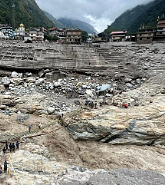The financial market crash of 2008 was, at heart, a consequence of the massive unrecognized tangle of systemic risk hidden in the proprietary risk models developed by the banks. Systemic risk describes the way in which there is underlying correlation in outcomes across investments, institutions, or whole financial systems.
The statistical valuation models for many financial instruments were tuned to the ranges seen over the previous couple of decades, and it was assumed that house prices could never fall. Taking tranches from multiple mortgage-backed securities and reconstituting them in Collateralized Debt Obligations was deemed to merit investment grade ratings, something that the rating agencies were prepared to bless with their holy water. No one worried too much about liquidity – whether a theoretical market for any financial instrument would actually be available in a crisis.
After the 2008 crash, the search was on to root out systemic risk wherever it was lurking. As the great edifice of financial risk modeling invincibility disintegrated, all risk models came into question as they might be similarly riddled with self-serving assumptions and buried systemic risks. These suspicions naturally spread to the risk models used by insurers.
Recently the insurance and reinsurance group Amlin ran a conference on the Systemic Risk of Modeling with the Oxford University James Martin Institute for the Future of Humanity. Gordon Woo of RMS was among the eminent list of speakers, which included Didier Sornette from ETH Zurich, who has famously shown how earthquake behavior provides insight into financial markets, and Lord Robert May, former head of the Royal Society, who has linked the mathematical behavior of unstable predator-prey ecosystems to financial regulation. The meeting followed a partnership between Amlin and researchers from the institute to explore the implications of systemic risk in modeling, with which RMS collaborated.
At the meeting, despite how hard some speakers tried to move the subject toward insurance risk models, the discussions were always drawn back to the finance sector; for fear of the consequences, banks have been allowed to sustain their trading models without any radical changes in how their activities are monitored and policed. The whole model of leverage used by the banks is prone to extraordinary booms and devastating, unforeseen busts. The fallout from the next area of over-optimistic risk modeling can never be too far away. Today there is an intriguing focus on developing sophisticated science models for market regulation of the banks.
Arguably the worldwide reinsurance industry had its systemic risk catharsis around 1990 to 1992, when Lloyd’s syndicates were found to be purchasing reinsurance from each other in a spiral that turned a $900 million bill from the destruction of the Piper Alpha platform into $15 billion of payouts across the market, as the loss had been reinsured more than 16 times. This example of systemic risk was caused by the way that brokers took a commission off the premium of every new incestuous reinsurance policy sold. No one was stress-testing what would happen when a large loss came into the market. The experience led to dramatic changes in market supervision. After 1992’s Hurricane Andrew, catastrophe risk models had become accepted to provide a technical basis for catastrophe insurance pricing.
So where does this lead the search for systemic risk in insurance risk models?
We should not be too complacent. We can see examples of systemic risk when all modelers rely on the same government science source for modeling parameters, as happened for the earthquake in Japan. After a great earthquake, Californian politicians, responding to extreme public pressure, might attempt to redefine deductibles as percentages of the loss rather than percentages of the value, or even allow insurers to claim for the consequences of earthquake damage on their fire policies. Insurers and others should look to models as stress tests.
Globalization has made it much easier for local catastrophes to have systemic consequences. We have seen examples of unforeseen systemic supply chain risk after floods in Thailand and volcanic eruptions in Iceland.
While I don’t believe there is anything like the pervasive nature of systemic risk that riddled risk modeling in the finance sector, systemic risk does exist in the application of insurance risk models. We are investigating and highlighting these elements of systemic risk so that model users have guidance for testing potential correlations between model outcomes, or even between underwriting and investment portfolios.






